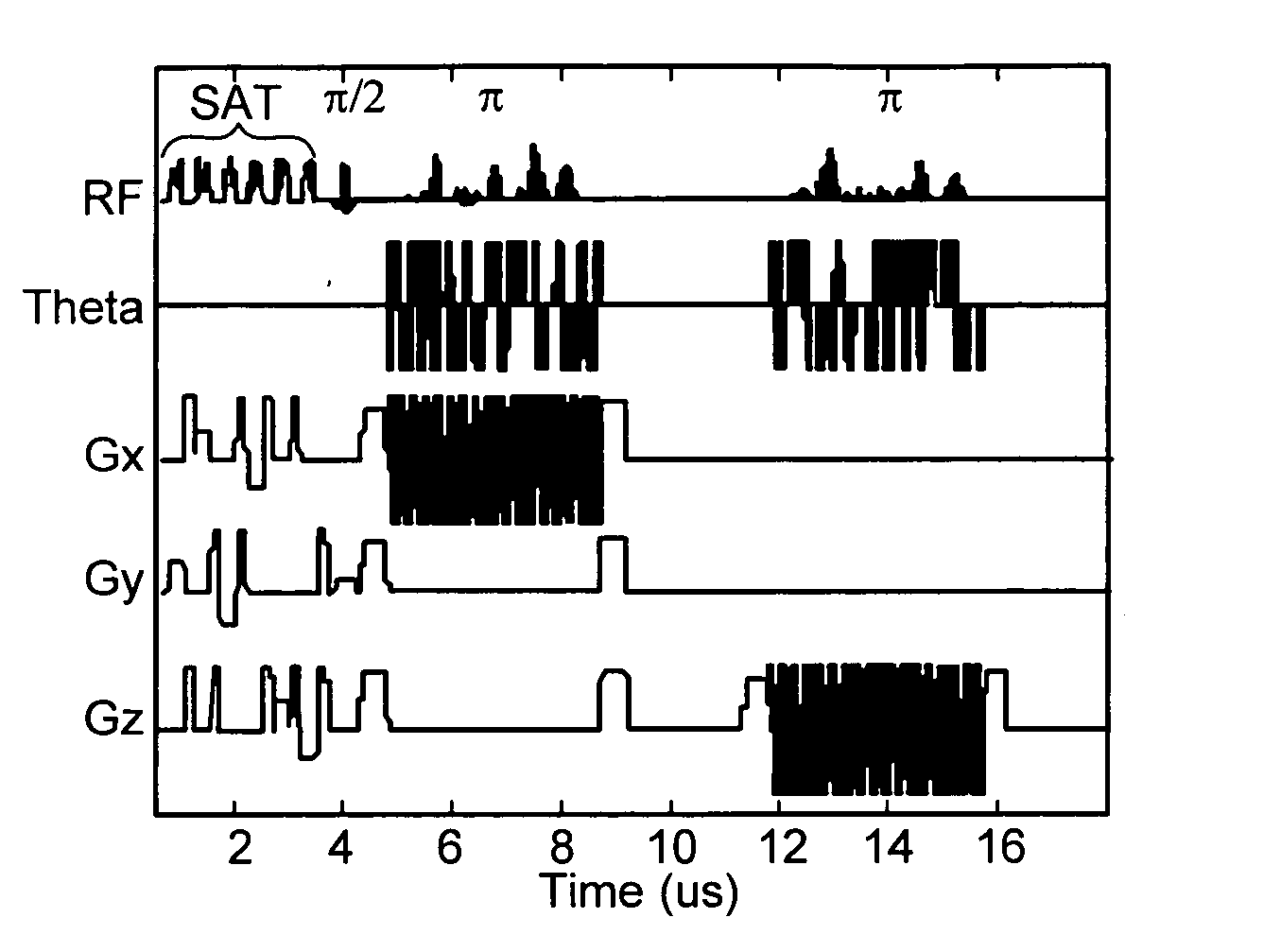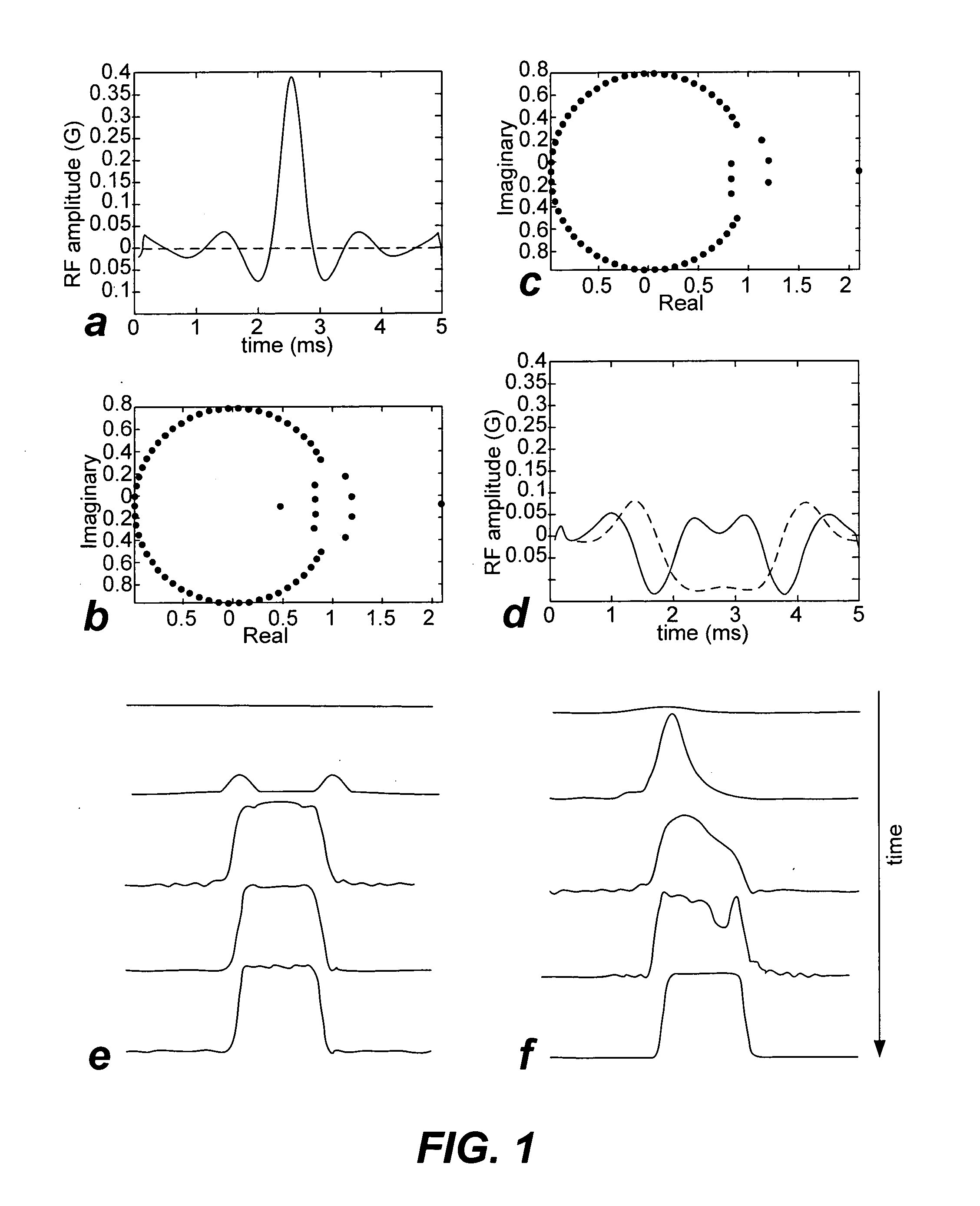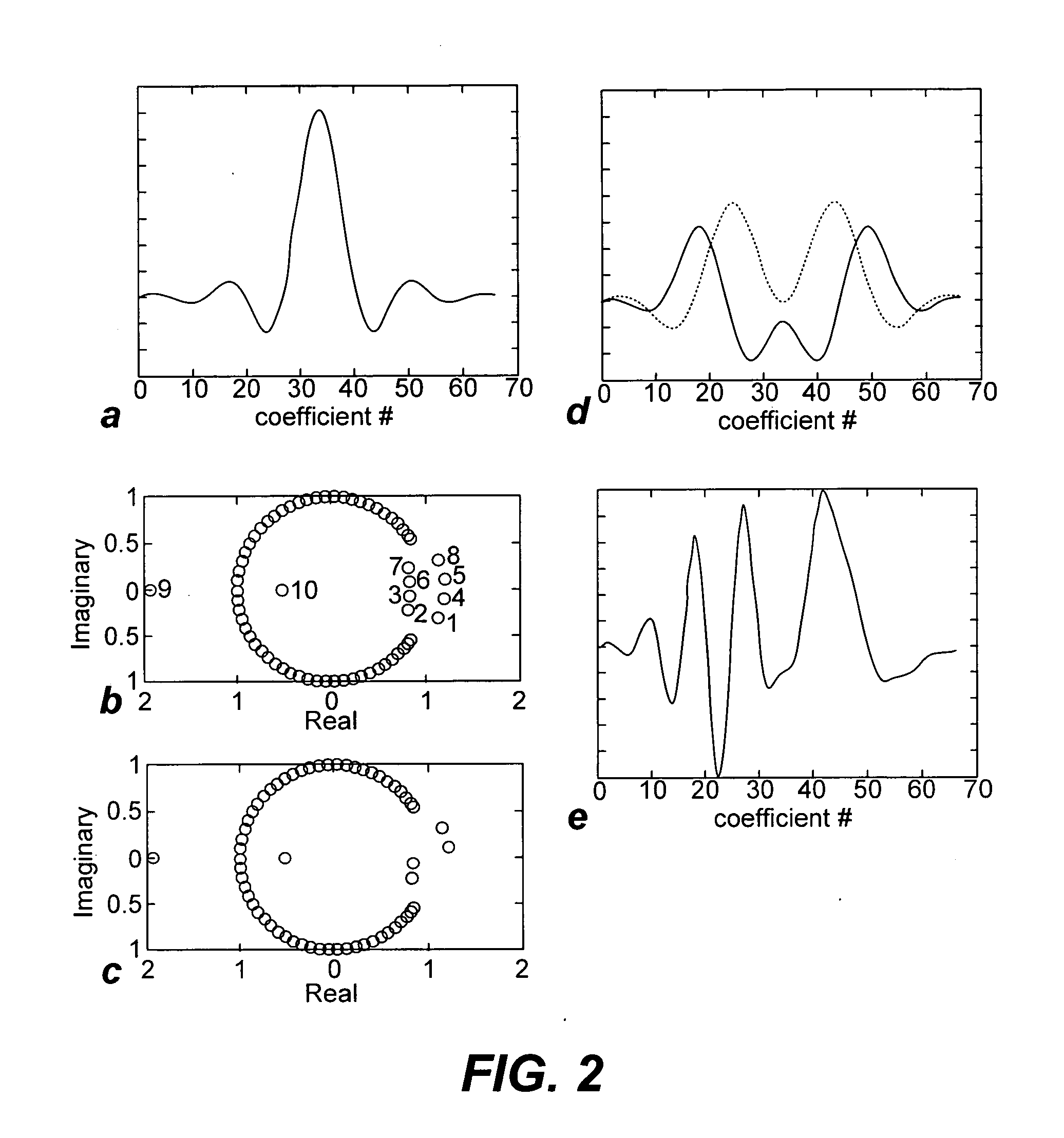Non-linear symmetric sweep spectral-spatial RF pulses for mr spectroscopy
a spectral-spatial, non-linear phase technology, applied in the field of magnetic resonance spectroscopy, can solve the problems of inability to perform pulses for j-difference editing, non-linear phase rf pulses affecting different resonant frequencies, and pulses that are inappropriate for j-difference editing, etc., to achieve the effect of evaluating the performance of pulse design
- Summary
- Abstract
- Description
- Claims
- Application Information
AI Technical Summary
Benefits of technology
Problems solved by technology
Method used
Image
Examples
Embodiment Construction
[0024] Spectral-spatial radio frequency (SSRF) pulses allow simultaneous selection in both frequency and spatial domains. These pulses are particularly important for clinical and research magnetic resonance spectroscopy (MRS) applications where suppression of the large water resonance and, for some applications, lipid resonances, is critical. The use of SSRF pulses allows the incorporation of the suppression of unwanted resonances directly into the excitation scheme without the need for suppression pre-pulses. With pre-pulse suppression schemes such as CHESS, the level of suppression is sensitive to T1 and RF field variations, and the long duration of the pre-pulses limits the performance of out-of-volume saturation. The use of SSRF pulses for MR spectroscopic imaging (MRSI) is also advantageous due to the high bandwidth of the sub-pulses (5-10 kHz) which greatly reduces the spatial-shift errors associated with the different resonant frequencies within the imaging volume. These erro...
PUM
 Login to View More
Login to View More Abstract
Description
Claims
Application Information
 Login to View More
Login to View More - R&D
- Intellectual Property
- Life Sciences
- Materials
- Tech Scout
- Unparalleled Data Quality
- Higher Quality Content
- 60% Fewer Hallucinations
Browse by: Latest US Patents, China's latest patents, Technical Efficacy Thesaurus, Application Domain, Technology Topic, Popular Technical Reports.
© 2025 PatSnap. All rights reserved.Legal|Privacy policy|Modern Slavery Act Transparency Statement|Sitemap|About US| Contact US: help@patsnap.com



